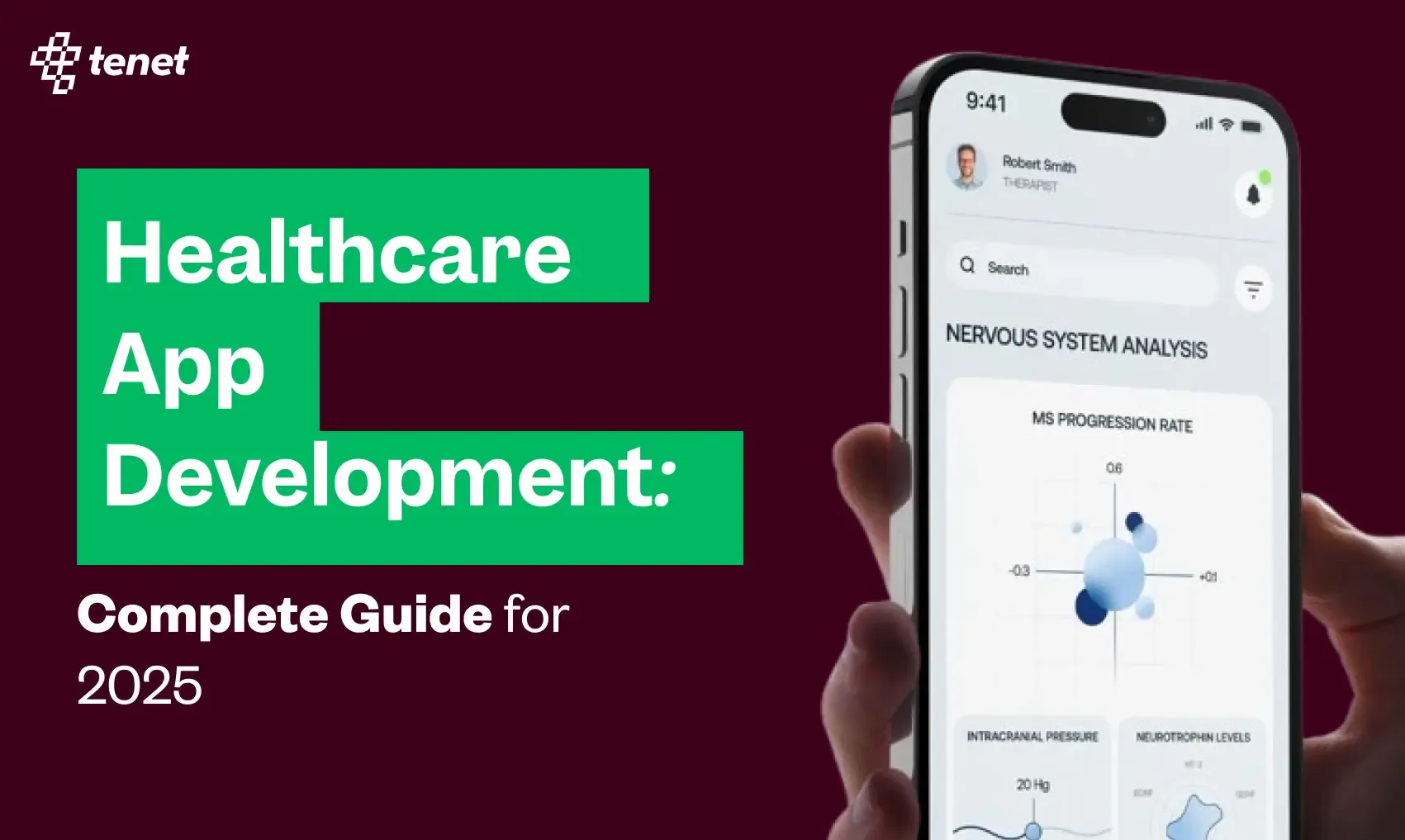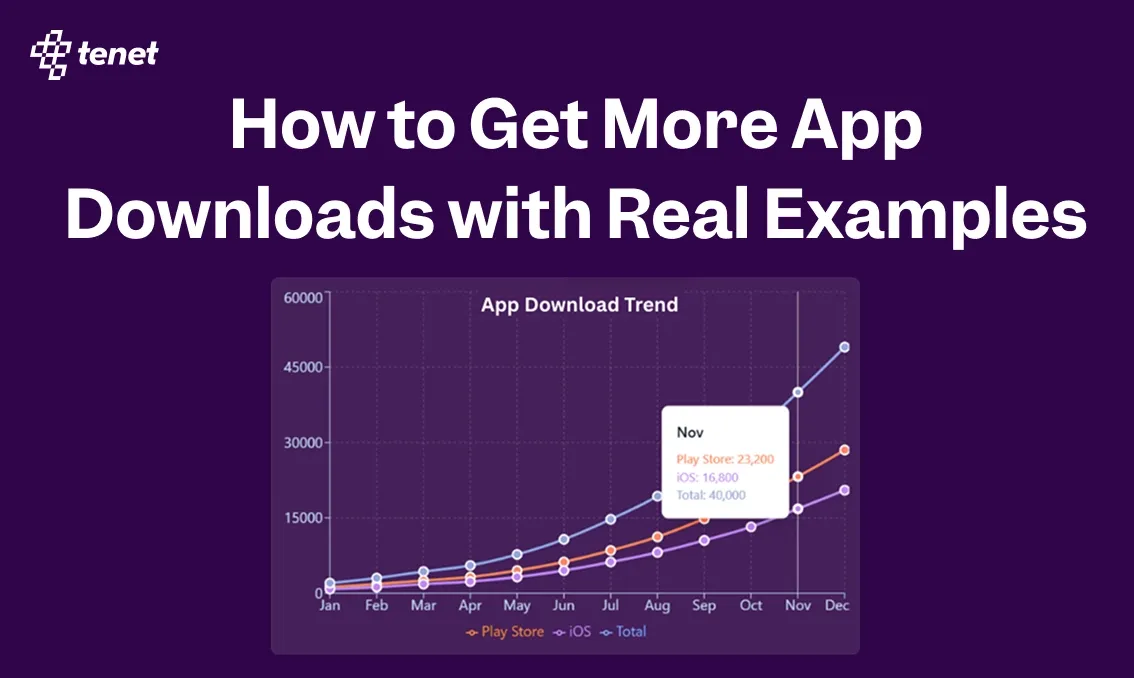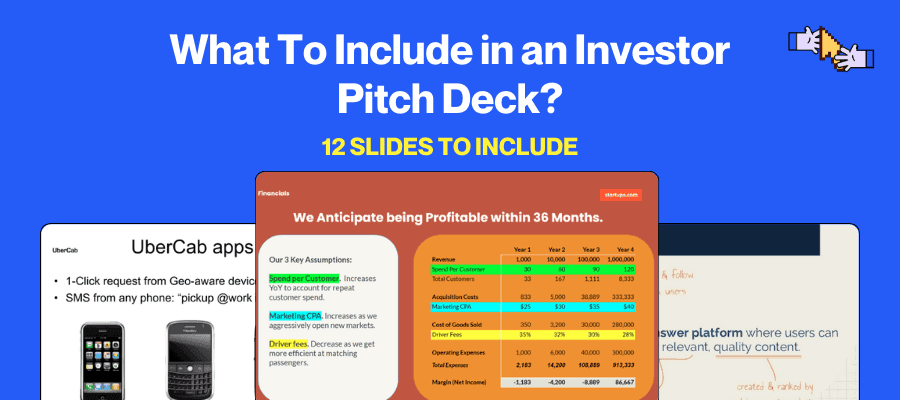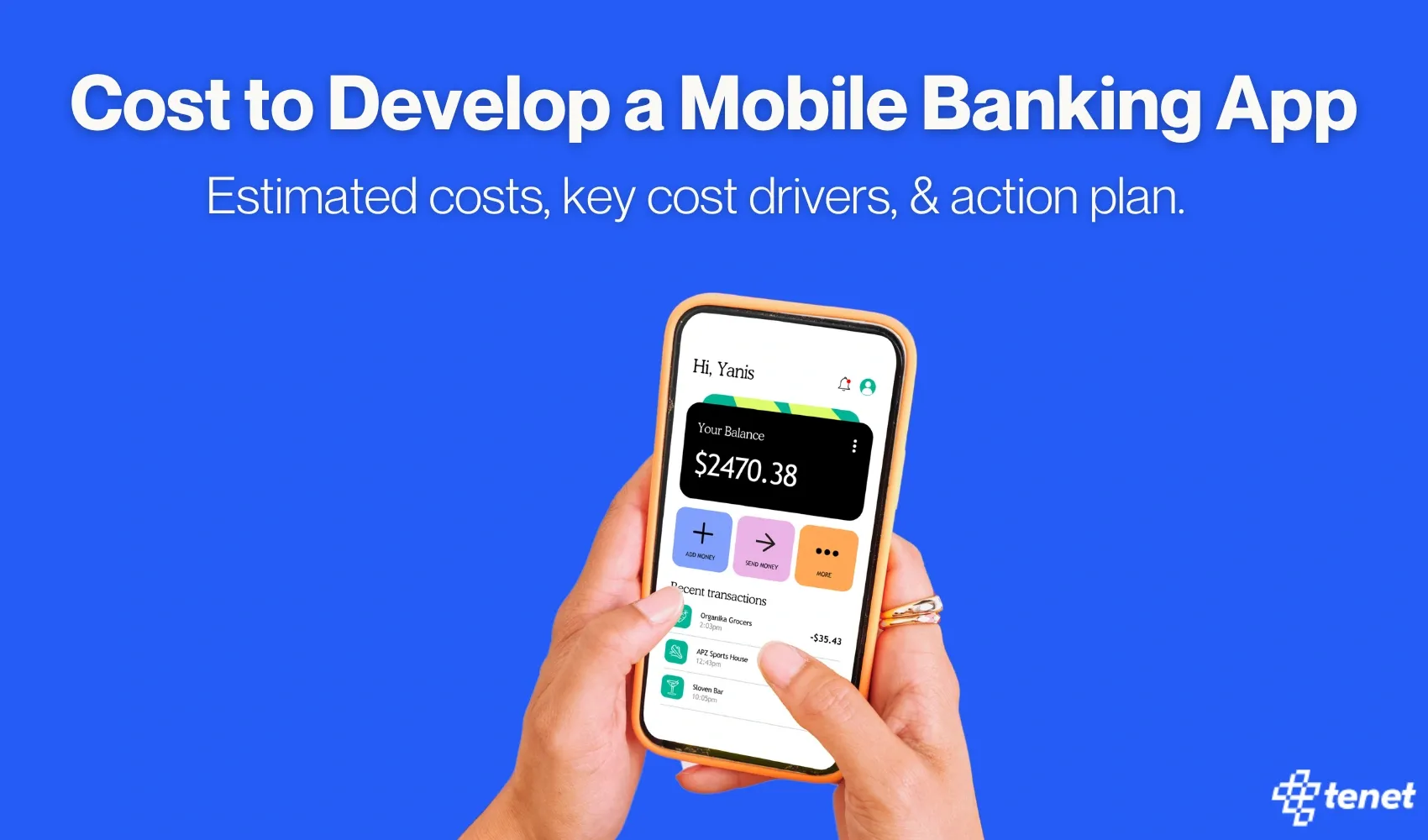Github Copilot Usage Data Statistics (2025)
Share
Share
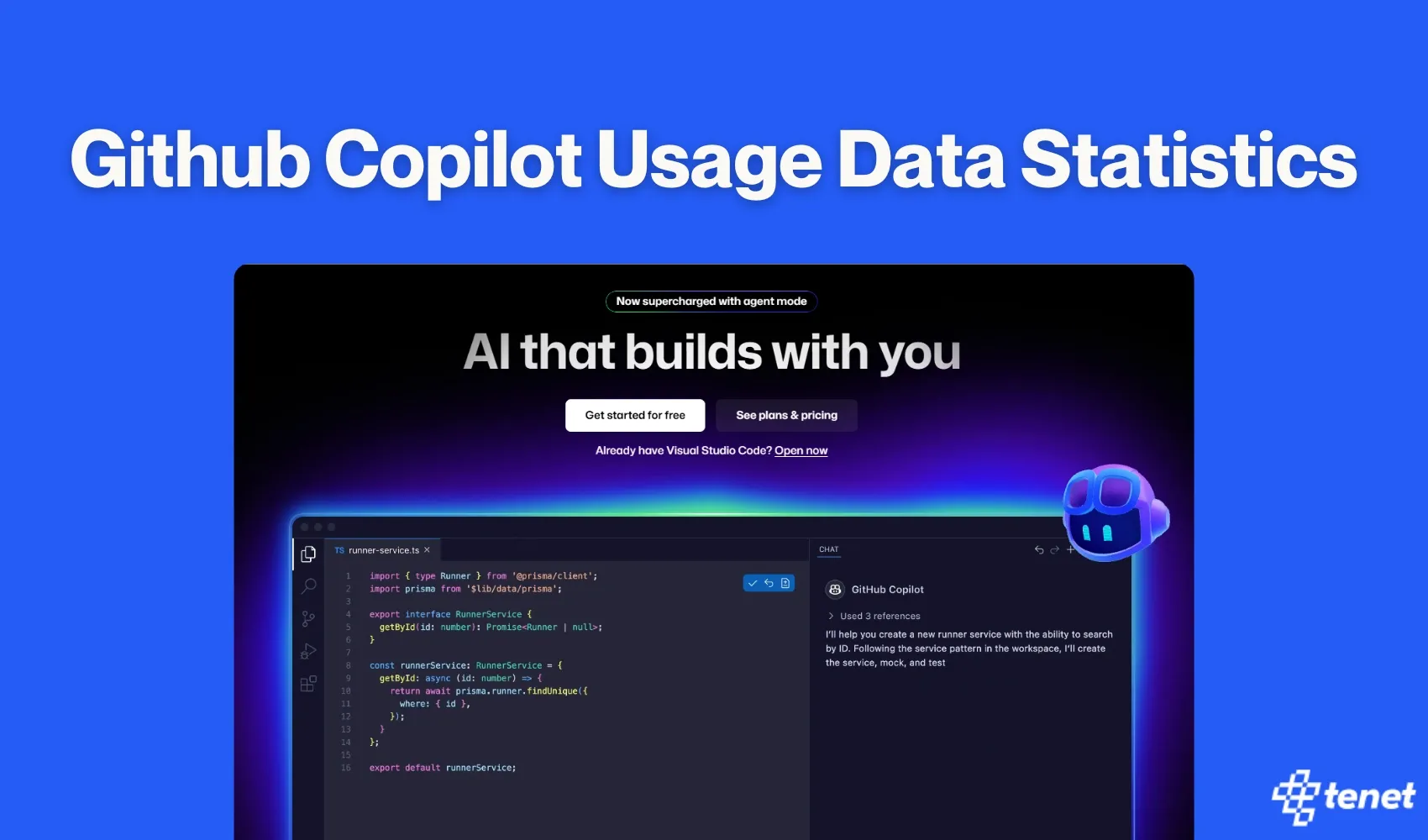
Get a quick blog summary with
GitHub Copilot is changing how developers work in 2025.
From writing code faster to improving team workflows, its impact is backed by strong data.
This listicle roundup shares the most important usage statistics, adoption trends, and real-world impact of Copilot across industries.
We gathered this data through trusted sources like GitHub, Microsoft, developer platforms, and our own research database.
In addition to public data, we’ve also included insights from our internal research database and real-world observations from client projects, product usage, and developer communities we work with.
If you want to understand how Copilot is shaping modern development, these numbers give you a clear picture.
👉 At the end of the article, we have listed all the original sources used to compile this content.
What is GitHub Copilot?

GitHub Copilot is an AI coding assistant that suggests code in real time as you type. Built by GitHub and OpenAI, it works in editors like VS Code and supports many languages. You can write code faster, generate functions, fix bugs, and even ask questions with Copilot Chat.
Key Github Copilot statistics
- Over 15 million developers were using GitHub Copilot by early 2025, which is a 400% increase in just 12 months, showing how fast teams are embracing AI-assisted coding.
- On average, Copilot now writes nearly half of a developer’s code, with some Java developers seeing up to 61% of their code generated by the tool.
- In controlled tests, developers using Copilot completed tasks 55% faster, proving that AI can dramatically reduce development time.
- Between 60% to 75% of users said Copilot helps them feel more satisfied with their work and less frustrated during coding.
- 81% of developers install Copilot the same day they get access, and 96% start using its suggestions right away, showing how intuitive and easy it is to get started.
- Developers keep 88% of the code generated by Copilot in their final submissions, which means its suggestions are both useful and reliable.
- In enterprise settings, Copilot reduced the average time to open a pull request from 9.6 days to just 2.4 days, speeding up the entire delivery cycle.
- The tool has gained 1.3 million paying subscribers, growing at 30% every quarter, making it one of GitHub’s fastest-growing products.
- With the help of Copilot Chat, code reviews are not only easier but also 15% faster, helping teams ship quality code more quickly.
- More than half of developers who try Github Copilot continue using it long-term, highlighting its strong retention and day-to-day value.
👉 Learn our guide on UX Design for AI Products (A Practical Guide for Designers).
1. How Widely Is GitHub Copilot Being Adopted in 2025?
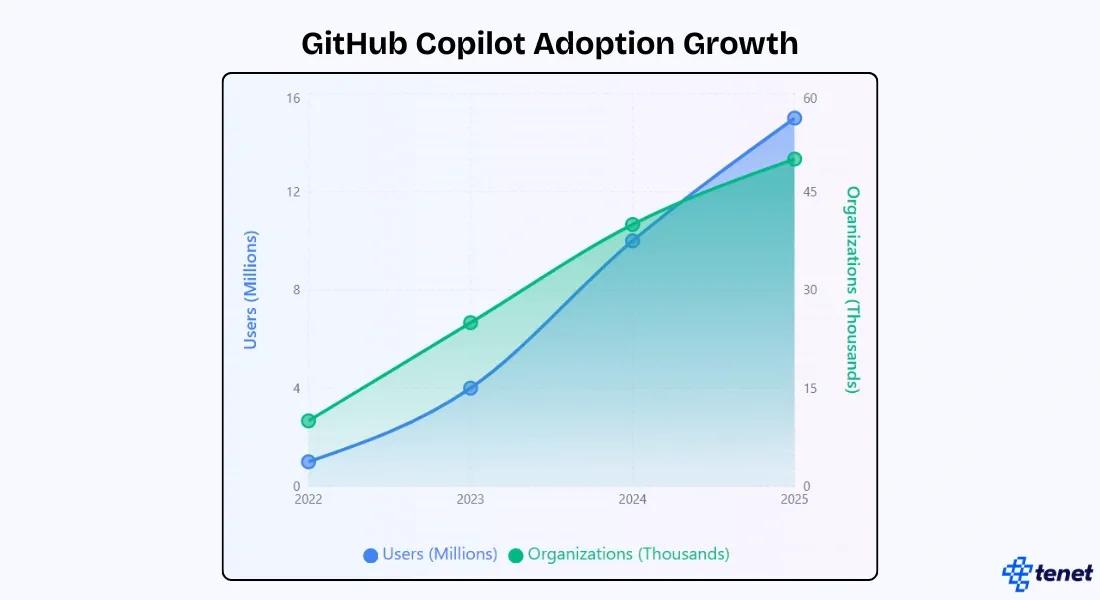
GitHub Copilot has seen massive adoption growth since its launch:
- By early 2025, the tool had over 15 million users, including free, paid, and student accounts, a 4× increase in just one year.
- Over 50,000 organizations, from startups to Fortune 500 enterprises, have incorporated Copilot into their development workflows.
- Among developers who try it, more than 50% continue using it long-term, proving strong stickiness.
- When given access, 81.4% of developers install the IDE extension the same day, showing eagerness to try it.
- 96% of these users start accepting Copilot suggestions the same day, indicating minimal onboarding friction.
- The tool is especially popular for work in familiar programming languages. About 70% of users rely on it for tasks within environments they already know.
- In usability feedback, 43% found it extremely easy to use, and 51% rated it extremely useful, underscoring a smooth learning curve and real value.
2. How Much Code Does Copilot Actually Write for Developers?
GitHub Copilot now writes nearly half of the code developers produce.
- On average, it now contributes 46% of all code written by users, with Java developers seeing up to 61% of their code generated by Copilot.
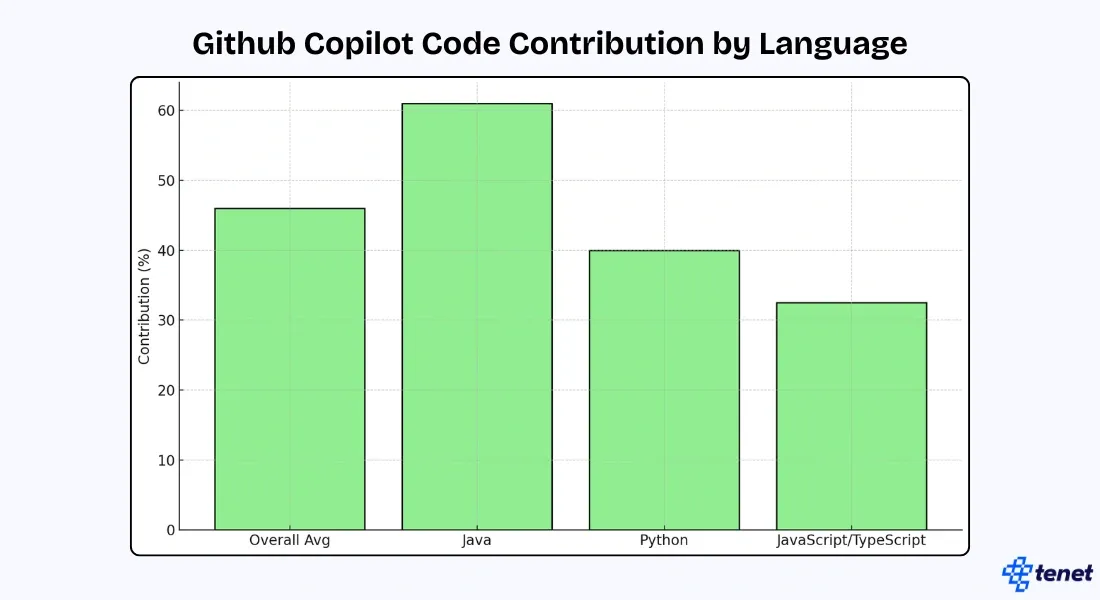
- This is a significant jump from 27% in 2022, reflecting rapid AI model improvement and user trust.
- In language-specific stats: Python projects see up to 40% Copilot-generated code, while JavaScript and TypeScript range from 30% to 35%.
- Developers are not just testing Copilot’s code; they are actively using it. On average, 88% of the characters generated by Copilot are kept in the final version of the code.
- 30–31% of suggestions are actively accepted, and 90% of developers have committed Copilot-generated code to repositories.
- Additionally, 91% reported that their teams merged pull requests that contained code suggested by Copilot, confirming team-wide acceptance.
3. Does GitHub Copilot Improve Developer Satisfaction and Reduce Mental Effort?
Copilot significantly improves developer well-being and job satisfaction:
- Across multiple surveys, 60–75% of developers said they felt more fulfilled, less frustrated, and more focused on satisfying work when using Copilot.
- Specifically, 59% felt less frustrated, and 60% reported greater job satisfaction.
- 74% said they could shift their attention to higher-value or creative tasks rather than repetitive grunt work.
- 87% reported using less mental energy on repetitive tasks like boilerplate or syntax.
- 77% said they spent less time hunting for syntax help or searching online.
- In larger cohort studies, 90% said Copilot made them feel more fulfilled, and 95% reported enjoying coding more with its assistance.
4. Can GitHub Copilot Make Developers More Productive and Help Them Stay in Flow?
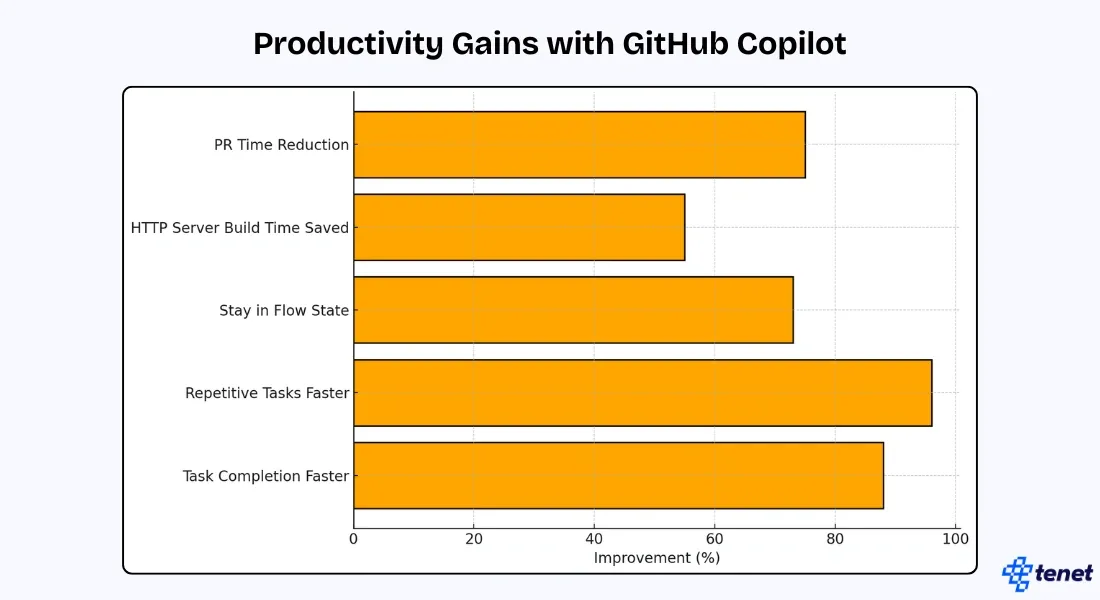
Copilot plays a major role in boosting speed and productivity:
- 88% complete their tasks faster, while 96% say repetitive coding tasks are completed quicker.
- 73% report being able to stay “in the zone” or maintain a flow state longer when using Copilot.
- In a controlled experiment, two groups of developers were tasked with building an HTTP server in JavaScript:
- The Copilot group completed the task 55% faster, averaging 1 hour 11 minutes, while the non-Copilot group took 2 hours 41 minutes.
- Additionally, 78% of Copilot users successfully completed the task, compared to 70% of the control group.
- In a real-world enterprise setting, Copilot reduced the average time to open a pull request from 9.6 days to just 2.4 days, a 4× improvement in turnaround time.
5. How Does Copilot Improve Code Reviews and Developer Confidence?
Copilot also enhances review quality and developer confidence:
- 85% of developers felt more confident in their code when using Copilot Chat.
- Code reviews were not only easier but also 15% faster with the help of Copilot Chat.
- 88% said they could stay focused and less frustrated while reviewing code using Copilot’s suggestions.
- When Copilot Chat was used to give review comments, nearly 70% of those comments were accepted, indicating higher trust in its judgment.
- Developers noted that Copilot-generated reviews were more actionable, leading to quicker improvements and fewer revisions.
- GitHub has reported that by April 2025, Copilot Chat had already auto-reviewed over 8 million pull requests, making it an integral part of modern review pipelines.
6. What Do Real Companies Like Duolingo and Accenture Say About Copilot?
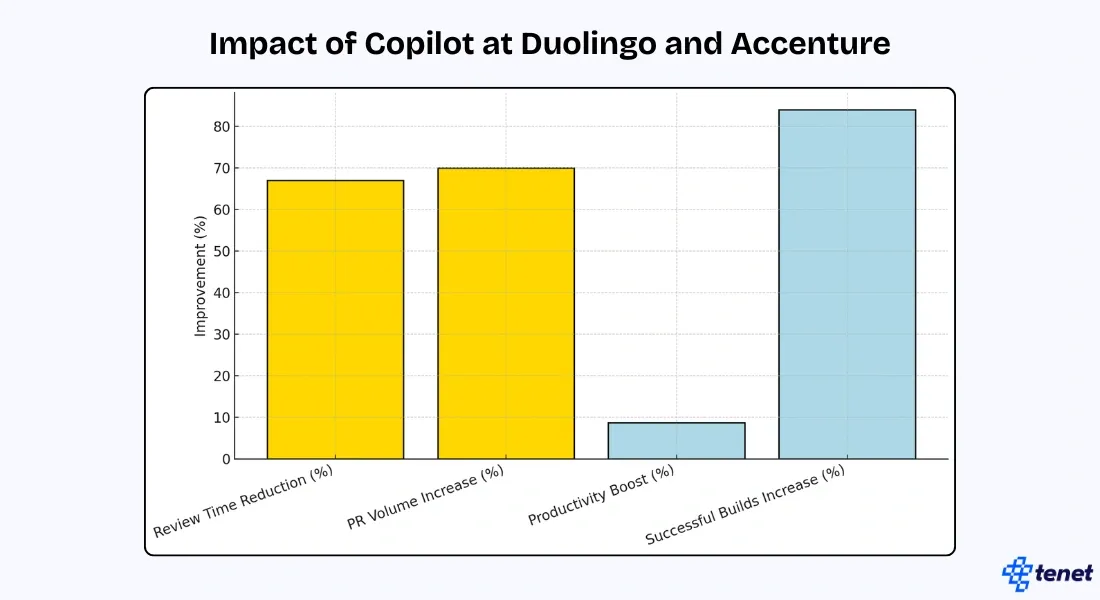
Duolingo
- For engineers new to a codebase, Copilot resulted in a 25% speed increase by helping them navigate unfamiliar files more quickly.
- Even experienced Duolingo developers reported a 10% speed boost, especially when generating boilerplate code.
- Their median code review turnaround time dropped by 67%, accelerating feature rollout.
- They also saw a 70% increase in pull request volume, indicating enhanced throughput per developer.
Accenture
- Over 80% of developers successfully adopted Copilot, and initial users had a 96% success rate in getting it to work productively.
- 67% of users engaged with Copilot at least five days a week, averaging 3.4 usage days weekly.
- Productivity increased with an 8.69% jump in pull requests and a 15% improvement in PR merge rates.
- Code quality improved too: Accenture reported an 84% increase in successful builds, validated by both human reviewers and automated testing systems.
7. Is GitHub Copilot Delivering Real Business Value and ROI?
Yes, GitHub Copilot is delivering real business value by driving measurable improvements in team performance and company-wide outcomes.
- GitHub Copilot has reached 1.3 million paid subscribers, with a 30% growth rate quarter-over-quarter.
- GitHub’s overall revenue jumped 40% year-over-year, primarily due to Copilot adoption across teams.
- For enterprises, Copilot delivers ROI quickly: most see measurable returns within 3 to 6 months of adoption.
- In many companies, teams using Copilot merged pull requests 50% faster and reduced lead time by 55%, especially in the development and first review phases.
8. How Do Developers Use Copilot Across Different Coding Tasks?
GitHub Copilot doesn’t just help with writing new code. It also assists across different stages of the software development lifecycle.
Here’s how developers report using Copilot for specific tasks:
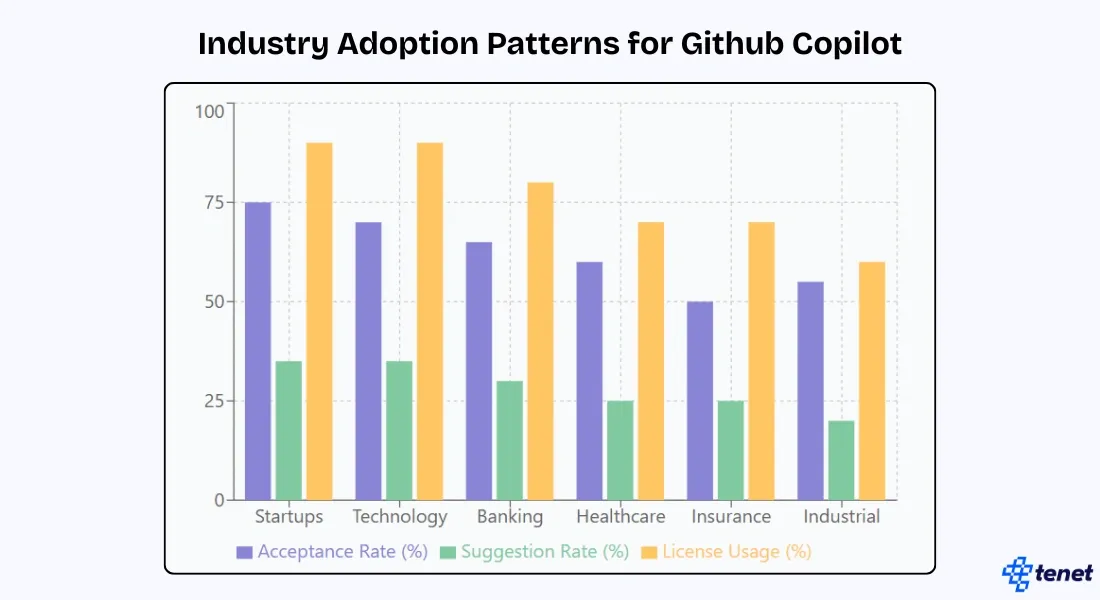
- On average, 20% of developers use Copilot to generate functions automatically. This figure varies by industry, ranging from 15% in technology and insurance to 25% in healthcare and startups.
- Around 10–15% of developers rely on Copilot for fixing bugs. Healthcare and startup teams report slightly higher usage (15%) for bug fixes using AI assistance.
- Copilot is also used for code cleanup and optimization, with 10% of developers using it for refactoring tasks. However, this number dips to 5% in industries like insurance and technology, suggesting varied adoption for this use case.
9. How Do Copilot Usage and Trust Levels Vary Across Industries?
Different industries experience varying levels of engagement with Copilot suggestions:
Acceptance Rate (How often suggestions are accepted)
Startups show the highest trust in Copilot, with 75% of AI suggestions accepted, compared to 70% in technology and 65% in banking and finance. Industries like healthcare (60%), insurance (50%), and industrial conglomerates (55%) are more cautious, reflecting slower adoption and stricter quality control requirements.
Suggestion Rate (How often Copilot suggests completions)
Copilot offers suggestions more frequently in technology and startup sectors (35%), indicating active use in fast-paced coding environments. The average suggestion rate is 30%, while industries like healthcare (25%), insurance (25%), and industrial conglomerates (20%) see lower suggestion volumes, possibly due to specialized codebases or legacy systems.
License Usage (Paid usage across businesses)
Technology and startup companies lead in enterprise adoption, with 90% of users on paid Copilot licenses. Banking and finance (80%) and insurance (70%) also show strong investment. Meanwhile, healthcare (70%) and industrial conglomerates (60%) are slightly behind the industry average of 80%, likely reflecting different procurement cycles or risk assessments.
Function Generation (AI usage for writing functions)
Healthcare and insurance industries show the highest usage of Copilot for function generation at 25%, likely due to repetitive logic and standardized workflows. In contrast, only 15% of developers in technology, startups, and banking use Copilot for this purpose, bringing the industry average to 20%.
Code Completion (Usage for completing partial code)
Code completion is one of Copilot’s most frequently used features, especially in technology, startups, and banking, where 70% of developers use it to speed up writing logic and syntax. Healthcare and insurance developers use this feature less frequently (50%), possibly due to regulatory caution or static code patterns. The industry average remains 60%.
Bug Fixing (Using Copilot to identify or fix bugs)
Copilot helps fix bugs for 15% of developers in healthcare and insurance, slightly above the 10% industry average.
In sectors like technology, startups, and industrial conglomerates, usage remains consistent at 10%, reflecting similar developer workflows and comfort with manual debugging.
Refactoring (Cleaning or restructuring code)
Refactoring is one of Copilot’s least-used features across industries. It’s adopted by 10% of developers in healthcare, banking, and industrials, but only 5% in technology, insurance, and startups. Developers may prefer to manually refactor for control, or rely on traditional IDE tools. The average usage is 10%.
Productivity Gains (Estimated productivity improvements)
The highest productivity gains (between 15–25%) are reported in startups, technology, and banking, where development speed directly impacts competitiveness. Industrial conglomerates report 10–20% gains, while healthcare and insurance see lower benefits (5–15%), likely due to stricter code review and deployment policies.
The industry-wide productivity improvement ranges from 10–20%.
GitHub Copilot Statistics Resources
Our Methodology
We collected this data through extensive research using only trusted and verified sources. These include GitHub’s official blog, Microsoft reports, developer platforms, and industry research sites.
We also added insights from our internal research database and real-world usage patterns observed across client projects. Tenet does not claim ownership of any original data presented. All statistics are compiled for educational and reference purposes.
Below, we have listed the key sources for full transparency.
Final Takeaways
The numbers clearly show that GitHub Copilot has moved far beyond being an experimental tool. It is now a core part of how modern software development happens.
With millions of users, strong adoption across industries, and clear improvements in speed, satisfaction, and return on investment, Copilot is changing the way developers and teams build software. It helps junior developers learn faster and allows experienced teams to push code more efficiently. Companies have seen faster pull requests, better code quality, and smoother onboarding.
From daily tasks to long-term goals, Copilot removes bottlenecks throughout the development process.
Whether you are coding alone or managing large teams, these statistics confirm that Copilot is reshaping developer workflows. It improves productivity, boosts team performance, and supports a faster pace of innovation.
The future of software development is already here, and it is powered by AI.
👉 Explore our other statistical roundups:
- 90+ Web Design Statistics for 2025
- 50+ Branding Statistics for 2025
- Android and Google Play Store Statistics [2025 Updated]
- The iOS App Market in 2025: Trends, Statistics, and Insights
- 90 SaaS Market Statistics & Insights (Updated May, 2025)
FAQs
1. How many developers use GitHub Copilot in 2025?
By early 2025, GitHub Copilot had over 15 million users, including free, paid, and student accounts. This marks a 400% growth in just one year, showing how fast AI-assisted coding is being adopted.
2. How much code does GitHub Copilot generate for developers?
Copilot now writes about 46% of the average user’s code. In Java projects, this can go as high as 61%. Most developers accept these suggestions, with 88% of Copilot-generated code staying in the final version.
3. Does GitHub Copilot actually boost productivity?
Yes, developers using Copilot complete tasks 55% faster in tests. It also helps teams reduce pull request time by 4 times, from 9.6 days to an average of 2.4 days.
4. Is Copilot improving developer satisfaction and reducing burnout?
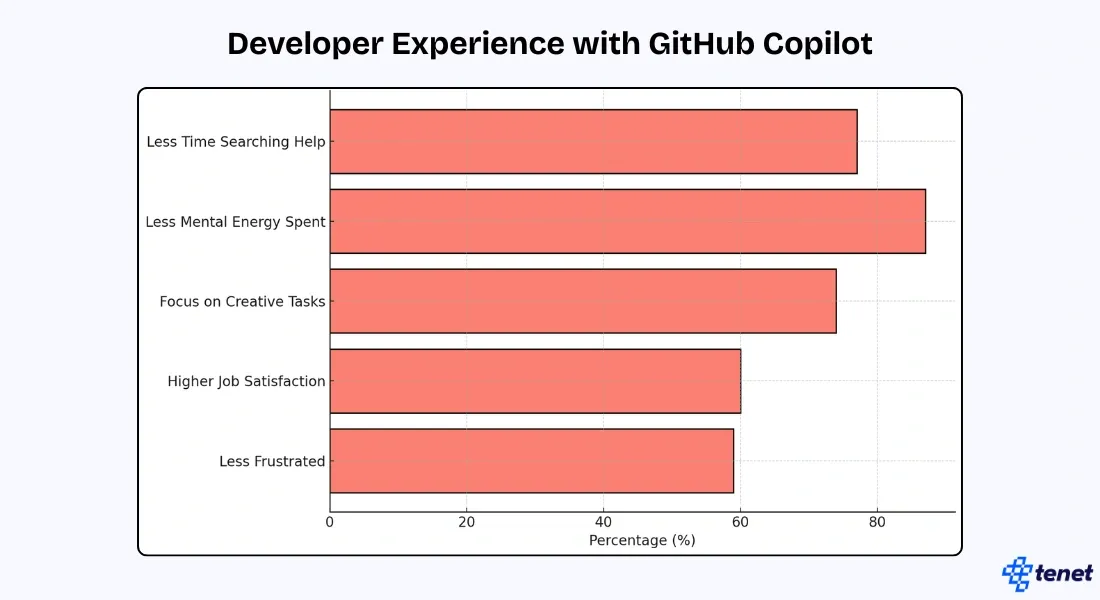
Absolutely. Between 60–75% of users report feeling less frustrated and more satisfied at work. It also helps developers spend less mental energy on repetitive tasks.
5. How quickly do users adopt GitHub Copilot after getting access?
Copilot adoption is fast. 81% install it the same day they get access, and 96% start using suggestions immediately, thanks to its ease of use and seamless integration.
6. Is GitHub Copilot used for more than just writing new code?
Yes. Developers use Copilot for a range of tasks:
- 20% use it for function generation
- 15% for bug fixes
- 10% for code refactoring
- Many also use it for code reviews, thanks to Copilot Chat’s smart suggestions.
7. Are companies seeing real ROI from using Copilot?
Yes. Copilot has over 1.3 million paid users and is helping companies cut development time, improve code quality, and boost team output. Most teams see a return on investment within 3 to 6 months.
Need help in developing your application or software? Get a free proposal.
Need help in developing your application or software? Get a free proposal.

Got an idea on your mind?
We’d love to hear about your brand, your visions, current challenges, even if you’re not sure what your next step is.
Let’s talk




